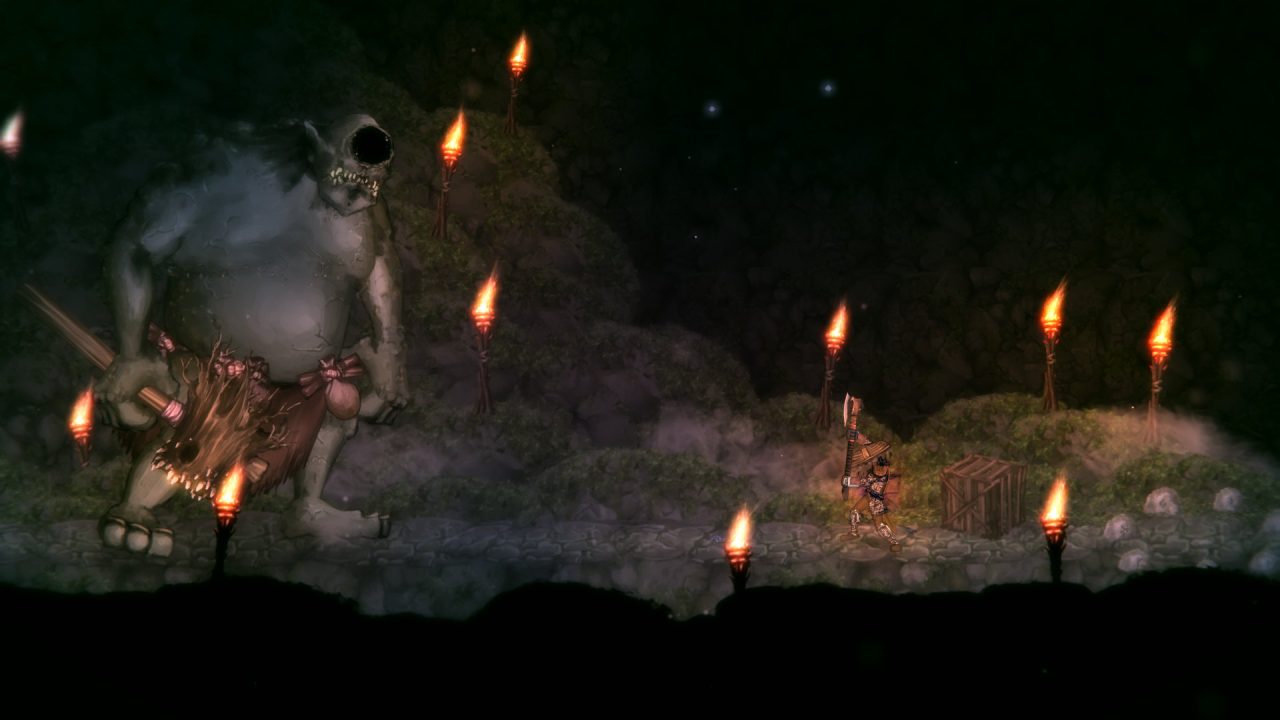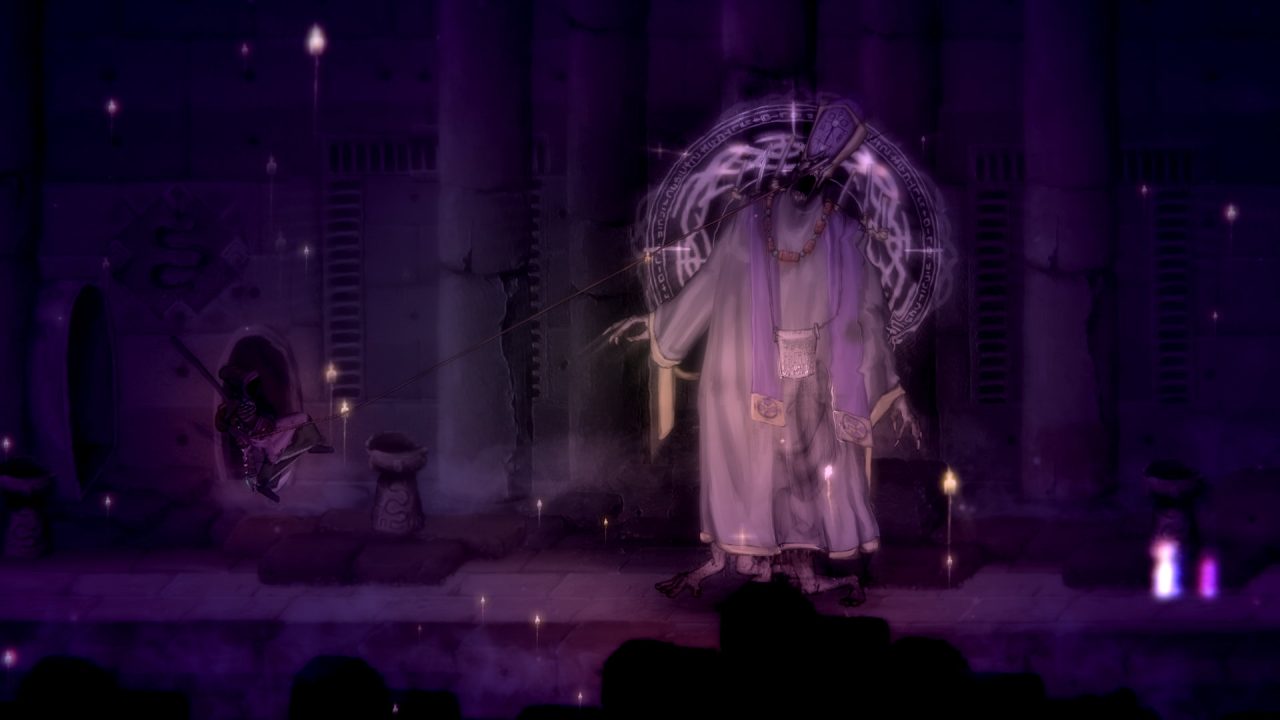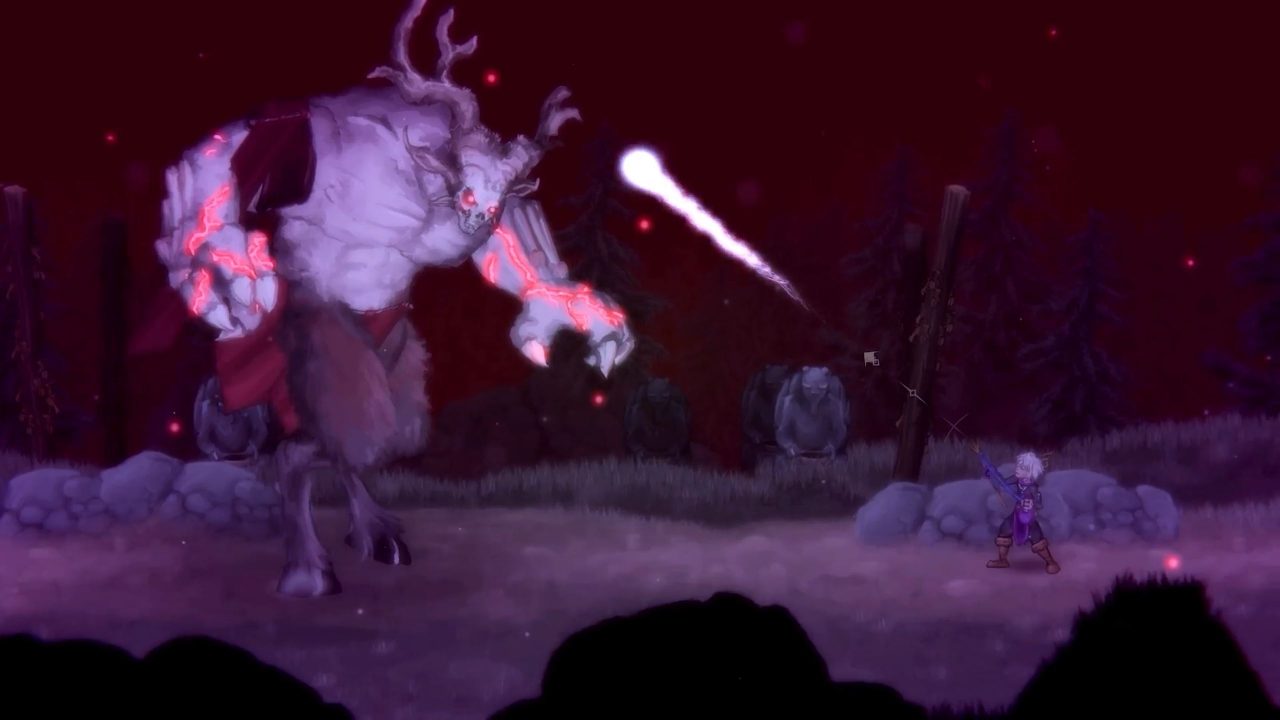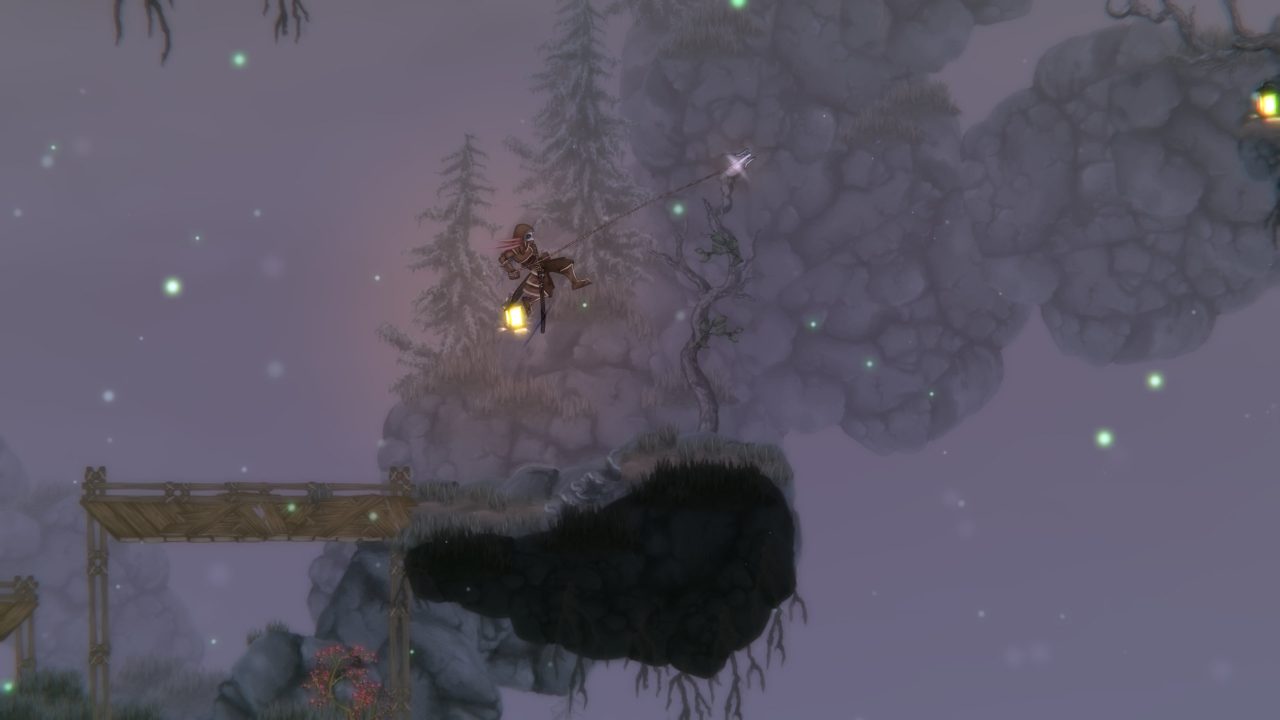Salt and Sanctuary served as one of the first true Soulslike titles to grasp what made Dark Souls a hit: macabre atmosphere, vague storytelling, tough-as-nails boss fights, and beautiful world building. That last one is key. The linchpin to this sub-genre is level design and world building. The difficult boss fights are a headfake. While Salt and Sacrifice (S&S) holds fast to several of the aforementioned tenets well, it fails considerably in this most critical aspect.
You are a sinner. Also, the protagonist you play as is a sinner. You get to choose the sin! How fun. I’m not sure how this ever matters, but you get a neat moniker and item for occasional dialogue interactions at home base. Being a good sinner, though, you are now tasked with eating the hearts of mages. Because that’s the kind of world this game takes place in. To repent, you must hunt down those who would do the kingdom ill will by cleansing the world of those tainted with magic. While using magic yourself. If this feels too real in a metaphorical sense, you are not alone.
Okay, so, you don’t technically need to use magic, but I sure did. I rarely dabble in the arcane arts when playing Soulslikes, so I took it upon myself to engage heavily in ranged battle. Initially, I found myself doing more melee combat than I had expected, but as I specialized my character further with levels and equipment, my habits were about 80% magic and 20% melee by mid-to-late game. Fortunately, those who choose a desired path won’t feel too pigeonholed, because S&S offers several options, such as using crossbows and staves that scale with the arcana stat.

Salt and Sacrifice has a lot to unpack in terms of gameplay, so let’s start with core combat. For the most part, combat is incredibly satisfying and addictive, albeit repetitive and samey. The developers go to some pains to add variety through enemy attack patterns, unique environmental influences, and elemental affinity, but given the emphasis on 2D—which is a choice and supposed draw—the options are limited. By the end of my 20-hour excursion, I had exhausted all possible contingencies the game had to offer in terms of unique battle layouts and challenges, which eventually devolved into an excess of enemies clumped up and edge-guarding enemies (incredibly annoying).
Elemental weaknesses and strengths added a layer of complexity that I enjoyed, not just because I had to switch out weapons and experiment a bit with what worked and didn’t, but because changing weapons meant I had to use spells with different attack patterns. For me, my staves offered two or three spells that had different damage, range, and magic point cost. Ice spells were powerful and could layer on a powerful debuff, but exhausted my supply of magic points quickly. Lightning was fun because it was extremely powerful and cost-effective, but required me to get within melee range to actually land the blows. Each weapon boasts different properties that make them fun to use, and each tool has its appropriate use. Unfortunately, not all weapons work the way we’d hope. For example, some staves had homing shots that would go clear outside the battle arena while fighting a mage (boss). As a result, I couldn’t even use that spell because the bolts would go in the opposite direction of the boss; this strikes me as an oversight, which is the tip of the iceberg in terms of design frustrations with Salt and Sacrifice.
But first, let’s talk about these mage bosses. Rather than boast a large variety of visually appealing boss fights, most bosses that players fight in this game are extremely tall mages. Each mage plays differently, with initial mages being uninspired fire, ice, lightning, etc.; later mages are mechanical, fungal, book-oriented, gravity-based, etc. Eventually, I got sick of fighting yet-another-tall-boy, which made for a relatively bland experience. Every location offers one or two bosses outside the box, but they were generally pretty easy and seemed to lack the same punch as the mages.

Navigating the world works like this: players start in a hub area that is non-threatening, full of NPCs, shops, crafting tables, etc. From here, players can teleport to hostile locations—of which the game has few. Players will run into obelisks that they can light to rest at (think bonfires), and traverse the 2D landscape in Metroidvania fashion. Get the hookshot, light the candle, float on the gust of wind using a cloth, and you, too, can get to new areas. If you don’t have those things, S&S is kind enough to pave a linear path for you to traverse with the occasional knick-knack hidden in plain sight. Few secrets or points of curiosity here. Shortcuts litter each location, making getting around a breeze. This is good because the only way to level up is to return to camp, and the obelisks don’t let you teleport. Upon reaching a certain point in a location, players discover a new code to reach the next location, and so the formula repeats.
At first glance, the spiderweb of leveling up seems something akin to Path of Exile. With a smattering of stats all over the place, players appear to have a good deal of agency as to customizing the protagonist, but the fact remains that a jack-of-all-trades specialty isn’t going to cut it. If you’re doing the mage thing, you gotta lean hard into one of the two mage stats, and if you’re going to run heavy, then you gotta focus on that. General important stats like stamina and focus (magic points) will be important as players decide, but don’t expect any fun unlocks like you would in Path of Exile. This is as vanilla as it gets. One thing I will credit Salt and Sacrifice on is that leveling up gives hit points in addition to providing a stat point, which is fantastic, because who likes raising vigor in Dark Souls?
Crafting can be a joy in Salt and Sacrifice. This isn’t the most in-depth system, but it offers enough customization to give players a sense that they’re building their character how they want. Since so many different mage types exist, players can use each mage’s drops to make armor, amulets, rings, and weapons they want. That said, getting unlucky with some drops might require players to go back to face a previously beaten mage just to farm drops, but these moments were rare for me. Fortunately, the cooperative play/multiplayer system is competent enough to make repeated excursions worthwhile and entertaining.

In true Soulslike fashion, players can be the bad guy and invade other players’ games, while others can play the hero and come to save the day. Outside of PvP, players can help others in whatever endeavor they like by just lighting a candle and waiting for the game to pair the two up. Beat the boss, collect the drops, and shake hands as the visiting player returns to their world. Good, simple fun. On some occasions, connectivity was a bit of an issue, resulting in odd hitboxes and taking damage when nothing seemed to hit me. While those issues are unique to multiplayer, similar issues occasionally occurred in my core experience.
In any platformer—and Salt and Sacrifice is part platformer—eaten inputs can be devastating. An eaten input is basically when the game doesn’t register that a player hits a button. I had these issues independent of stamina, focus, and cooldown limitations. Combine the platforming grievances with nearing the conclusion of a boss fight, and what once was a solid foundation of trust becomes a relationship mired with uncertainty and frustration. I’m happy to say this wasn’t common, but when a challenging fight ends the wrong way outside of my control, the sting lasts a while. If I lose my souls on top of it? I can’t possibly sigh loud enough. Complaints aside, Salt and Sacrifice controls well enough overall.
In terms of presentation, we see the largest contrast from the Salt and Sanctuary, which bleeds a bit into gameplay. A good platformer and Soulslike needs to feel like I’m exploring a temple, cave, or abandoned castle. The platforming and landscape should be molded around these environments. Having alternating thin platforms connected to a long, narrow, and vertical column just doesn’t give me a sense of place. It doesn’t make sense. The same for the wooden planks in a cave. Why are they here? What did the person or people who built these hope to accomplish? Is there a mine here somewhere? I see no evidence of it. In short, the visuals don’t contribute to the storytelling or mythos. I’m not exploring a temple; instead, I’m running around on a means of getting from point A to point B with a temple-looking texture veneer. And I’m painfully aware of that fact almost all the time.

Musically, I found Salt and Sacrifice’s tunes competent, atmospheric, and limited in variety. A dark, gloomy world like this demands low, somber tones with long, drawn-out strings. The melodies fit the world, but they don’t have staying power. As a result, none of the music is memorable, but it serves its purpose in the moment.
Salt and Sacrifice is a capable Soulslike for those who can’t get enough of the genre. I had a good time playing it and found the experience worthwhile, but I by no means think this cements itself as a flagbearer for games like it. Five years later, I still distinctly remember the personality and mystery of Salt and Sanctuary, but this title seems to lack that same sort of magic. Though, I will say, Soulslikes have a high standard given the sheer quality of titles available.


